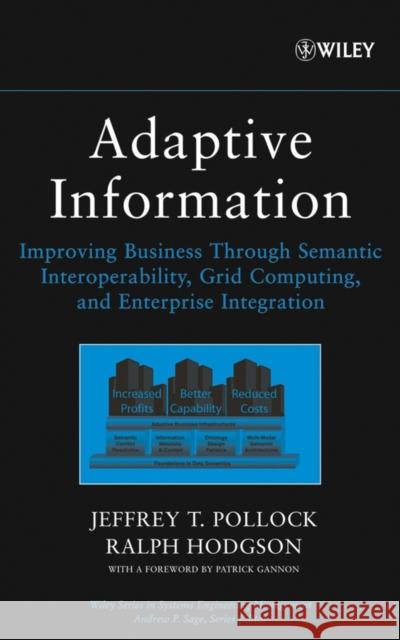Adaptive Information: Improving Business Through Semantic Interoperability, Grid Computing, and Enterprise Integration » książka
topmenu
Adaptive Information: Improving Business Through Semantic Interoperability, Grid Computing, and Enterprise Integration
ISBN-13: 9780471488545 / Angielski / Twarda / 2004 / 440 str.
Adaptive Information: Improving Business Through Semantic Interoperability, Grid Computing, and Enterprise Integration
ISBN-13: 9780471488545 / Angielski / Twarda / 2004 / 440 str.
cena 712,26 zł
(netto: 678,34 VAT: 5%)
Najniższa cena z 30 dni: 689,06 zł
(netto: 678,34 VAT: 5%)
Najniższa cena z 30 dni: 689,06 zł
Termin realizacji zamówienia:
ok. 22 dni roboczych.
ok. 22 dni roboczych.
Darmowa dostawa!
- New Paradigm for considering application integration and B2B problems
- Heightens the importance of conveying meaning between systems
- Addresses movement in the EAI space toward more data handling capabilities
- Offers a solution for the multitude of managers disconnected with the latest technologies
- Leverages the technical advances made in complex data integration over 15 years
- Shifts the focus from technology solutions to information solutions
- Relies heavily on the use of practical examples, tips, definitions, and soapbox excerpts throughout the main body of text











